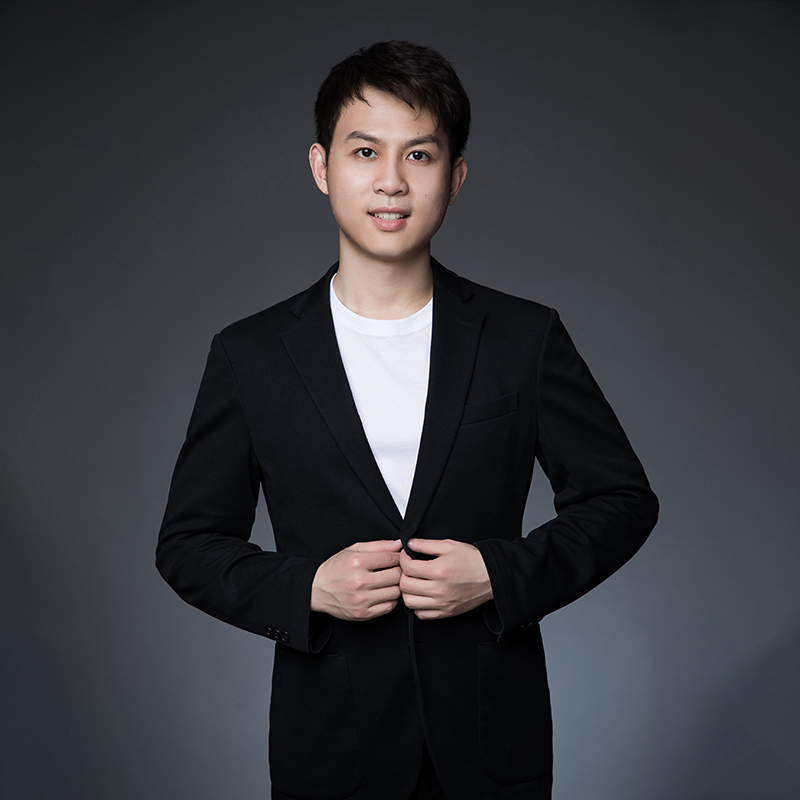2012年考研英语一翻译真题解析
相关链接:历年考研英语翻译真题解析大汇总
2012年考研英语翻译真题解析
Part C
Directions:
Read the following text carefully and then translate the underlined segments into Chinese. Your translation should be written clearly on ANSWER SHEET 2. (10 points)
Since the days of Aristotle, a search for universal principles has characterized the scientific enterprise. In some ways, this quest for commonalities defines science. Newton's laws of motion and Darwinian evolution each bind a host of different phenomena into a single explicatory frame work.
(46)In physics, one approach takes this impulse for unification to its extreme, and seeks a theory of everything-a single generative equation for all we see.It is becoming less clear, however, that such a theory would be a simplification, given the dimensions and universes that it might entail, nonetheless, unification of sorts remains a major goal.
This tendency in the natural sciences has long been evident in the social sciences too. (47)Here, Darwinism seems to offer justification for it all humans share common origins it seems reasonable to suppose that cultural diversity could also be traced to more constrained beginnings. Just as the bewildering variety of human courtship rituals might all be considered forms of sexual selection, perhaps the world’s languages, music, social and religious customs and even history are governed by universal features. (48)To filter out what is unique from what is shared might enable us to understand how complex cultural behavior arose and what guides it in evolutionary or cognitive terms.
That, at least, is the hope. But a comparative study of linguistic traits published online today supplies a reality check. Russell Gray at the University of Auckland and his colleagues consider the evolution of grammars in the light of two previous attempts to find universality in language.
The most famous of these efforts was initiated by Noam Chomsky, who suggested that humans are born with an innate language-acquisition capacity that dictates a universal grammar. A few generative rules are then sufficient to unfold the entire fundamental structure of a language, which is why children can learn it so quickly.
(49)The second, by Joshua Greenberg, takes a more empirical approach to universality identifying traits (particularly in word order) shared by many language which are considered to represent biases that result from cognitive constraints
Gray and his colleagues have put them to the test by examining four family trees that between them represent more than 2,000 languages.(50)Chomsky’s grammar should show patterns of language change that are independent of the family tree or the pathway tracked through it. Whereas Greenbergian universality predicts strong co-dependencies between particular types of word-order relations. Neither of these patterns is borne out by the analysis, suggesting that the structures of the languages are lire age-specific and not governed by universals.
译文答案
46. 【解析】本句结构比较简单,它是一个简单句,句子主干结构是one approach takes…and seeks…。破折号后面的部分是对前面提到的理论的进一步解释。
1)take …to extreme…把……发挥到极致,把。。。推至极限
2)theory of everything万有理论。或者也可以一个短语翻译出来"适用于任何事物的理论"
3)generative equation生成等式、生成方程。
【参考译文】物理学中的一个理论把这种归一的冲动发挥到了极致,它探寻一种万有理论----一个关于我们能看到的一切的生成方程式。
解析:
47. 【解析】对本句话的理解关键在于对for引导的句子的正确理解。因为有两个逗号,有的同学在考场比较紧急的时间和紧张的状态下容易把两个逗号间的部分理解为插入语,那么这句话就很难理解了。
1)for 引导的句子表原因与前句是并列关系,for原因并列句中又包含一个if引导的条件状语从句
2)"it seems reasonable to suppose that"对这句话的翻译可以翻译成一个长句,也可以分开翻译成"那么假设文化差异也能够追溯到更有限的源头, 这种假设看上去便是合理的了。"
3)对于 "cultural diversit"的理解,我们容易受到之前在备考中经常遇到的"cultural diversity"的影响,直接翻译成"文化多样性",但在本文,前文很多次提到了共性,所以这里我们翻译为"文化差异"更合适。
【参考译文】在这里,达尔文主义似乎提供了有力的理由,因为如果全人类有共同的起源,那么假设文化差异也能够追溯到更有限的源头好像就是合理的了。
48. 【解析】这句话结构主要在于对三个"what"从句的理解。本题是三个what引导的从句第一个是what引导的宾语从句,做filter out 的宾语。第二个what是介词from的宾语,from 是固定搭配中的介词filter out A from B。第三个what是understand的宾语,和how并列
1)句子主干可以看做:To filter out A from B enables us to understand C and D
A指的是"what is contingent and unique"
B指的是"what is shared" how complex cultural behaviour arose"
C指的是"how complex cultural behaviour arose"
D指的是"what guides it in evolutionary or cognitive terms"
2)Filter out词组本意是滤掉,。这个单词可能有同学会不熟悉,但是如果对本句结构理解清楚,看到from这个介词,加之对前文大意的理解,我们可以猜出这个词的意思,或者理解为"区分"等也不影响全句的理解。以避免我们有的同学看到第一个单词不认识立马生出的胆怯情绪,影响下文判断。
【参考译文】把差异性和独特性从共性中过滤出来也许能让我们理解复杂的文化行为是如何产生的,是什么从进化或认知领域指导着它。
49. 【解析】本句结构比较明朗,关键是句子前部分单独很难理解,需要结合前文。这也恰恰说明了考研英语中的翻译首先是阅读理解的一部分,不是单独的翻译而已。
1)这里的the second与上文的"The most famous of these efforts was initiated by Noam Chomsky,",所里这里应该翻译成"第二种理论"所以这句话需要根据上下文和逻辑解释清楚。而不能单纯的翻译成第二。。。
2)对于括号内部的处理,我们可以直接放在括号中即可。
【参考译文】约书亚格林伯格为寻找语言的共性而付出努力提出了第二种理论。他采用了一个更实用的共性理论,做法是辨认出众多语言的共有特征(尤其是按照词序排列),这些特征被认为代表了由认知局限导致的偏差。
50. 【解析】这句话的结构比较简单,复杂的是其中大量的术语和不熟悉的词汇。对于这些词汇我们根据直译即可。
本句结构:Chomsky's grammar should show…, whereas Greenbergian….
1)That引导的定语从句修饰patterns
2)这里的"grammar"是指是上文的生成语法,所以这里可以把生成语法翻译出来。
3)co-dependencies 这个词需要根据上下词义加之词根词缀来猜测出词义,因为下文指出是两者关系,所以可以翻译为"共存性"。
【参考译文】乔姆斯基生成语法应该表明语言变化的模式,这些模式独立于族谱或贯穿其中的路径,然而格林伯格的共性理论预测词序关系的特殊类别之间(而不是其他)有着强烈的共存性。
不想错过2020考研现场确认时间、准考证打印时间和成绩查询时间,可以 免费预约短信提醒
环球网校友情提示:更多2020考研历年真题、模拟试题,考研英语5500考纲词汇,大纲解析及备考资料请点击文章下方“免费下载”按钮免费下载学习。
-
考研英语二必背单词拼团已拼9259团
-
《2025年全国硕士研究生招生考试考生进入复试的初试成绩基本要求》(国家分数线)查看368.73KB 下载数 111
-
考研复试面试-英语口试要求及材料查看217.03KB 下载数 47
-
考研复试面试英语口语经典60问查看112.39KB 下载数 63
最新资讯
- 考后发布:2025年考研数学真题答案及解析2024-12-22
- 考后发布:2025年考研数学真题答案及解析2024-12-22
- 2025年考研英语真题发布!立即查看2024-12-21
- 2025年考研政治多项选择真题答案已发布!速来核对2024-12-21
- 2025考研政治真题:分析题考后复盘(二)2024-12-21
- 2025考研政治真题:分析题考后复盘(一)2024-12-21
- 考后一起对答案!2025年考研政治真题答案来了2024-12-21
- 【考后复盘】2025年考研政治考试真题:多项选择题(二)2024-12-21
- 【考后复盘】2025年考研政治考试真题:多项选择题(一)2024-12-21
- 2025年考研政治真题抢先看!持续更新中2024-12-21
考研历年真题下载 更多
-
【汇总】考研政治近3年历年真题及答案解析2.53MB 下载数 29 查看
-
【汇总】考研英语(二)近3年真题及答案解析1.64MB 下载数 5 查看
-
【汇总】考研英语(一)历年真题及答案解析1.52MB 下载数 10 查看
-
《2025年全国硕士研究生招生考试考生进入复试的初试成绩基本要求》(国家分数线) 368.73KB 下载数 111 查看
-
考研复试面试-英语口试要求及材料 217.03KB 下载数 47 查看
-
考研复试面试英语口语经典60问 112.39KB 下载数 63 查看






 打卡人数
打卡人数





